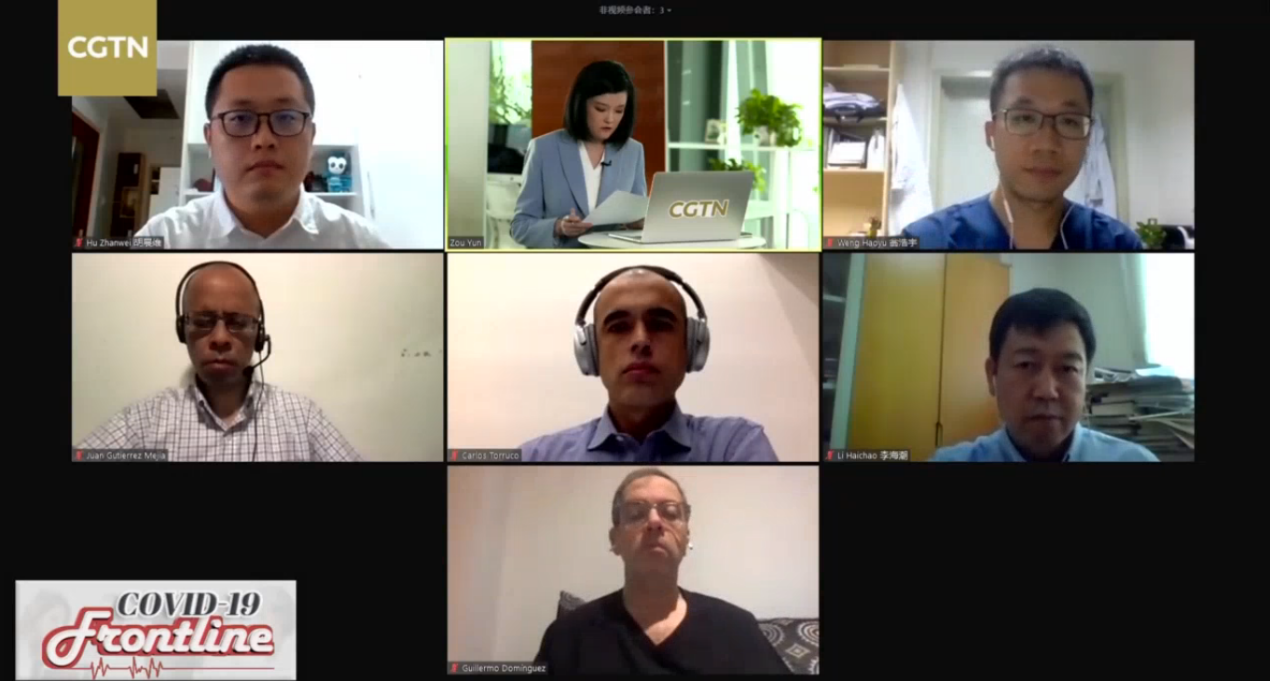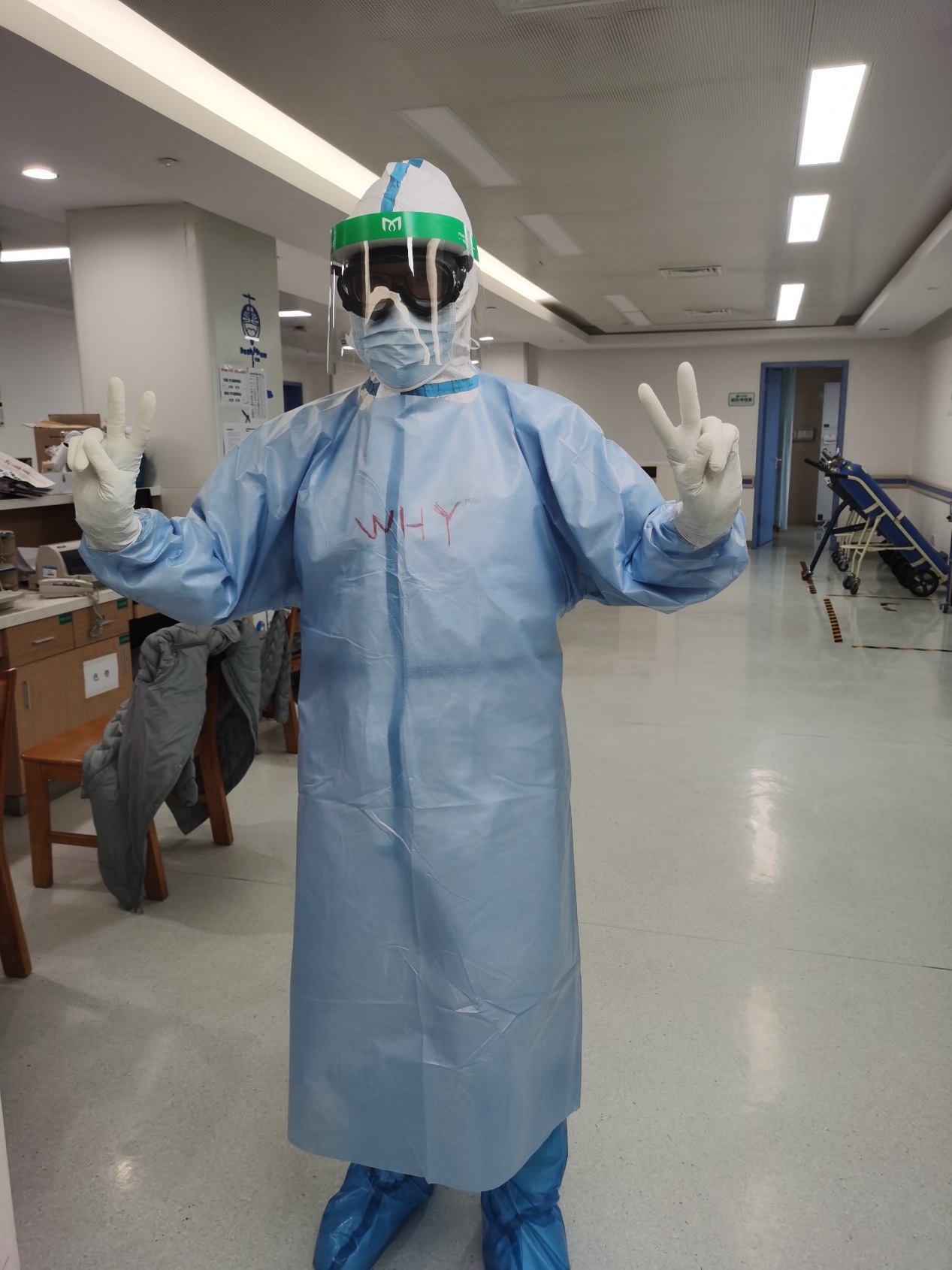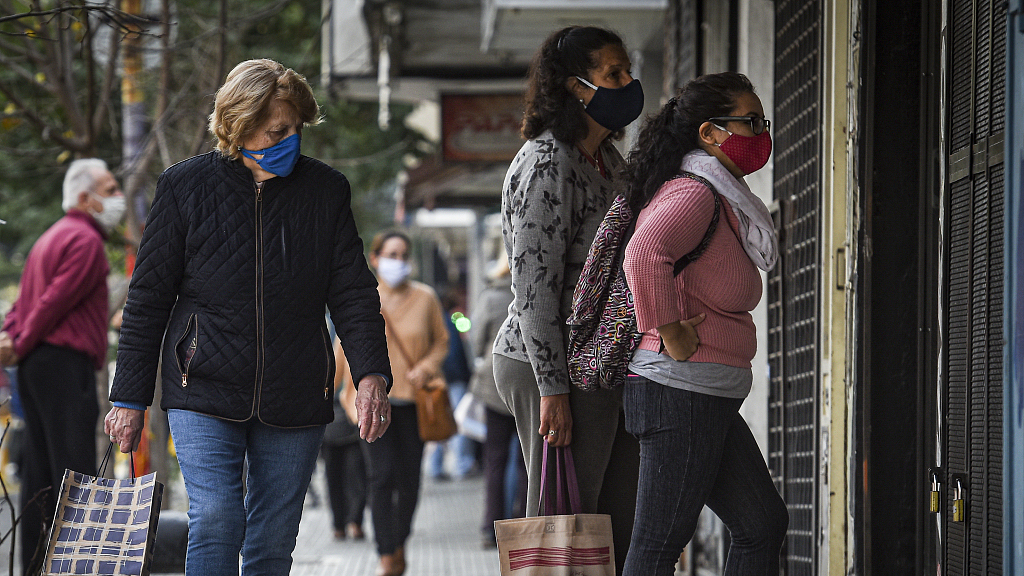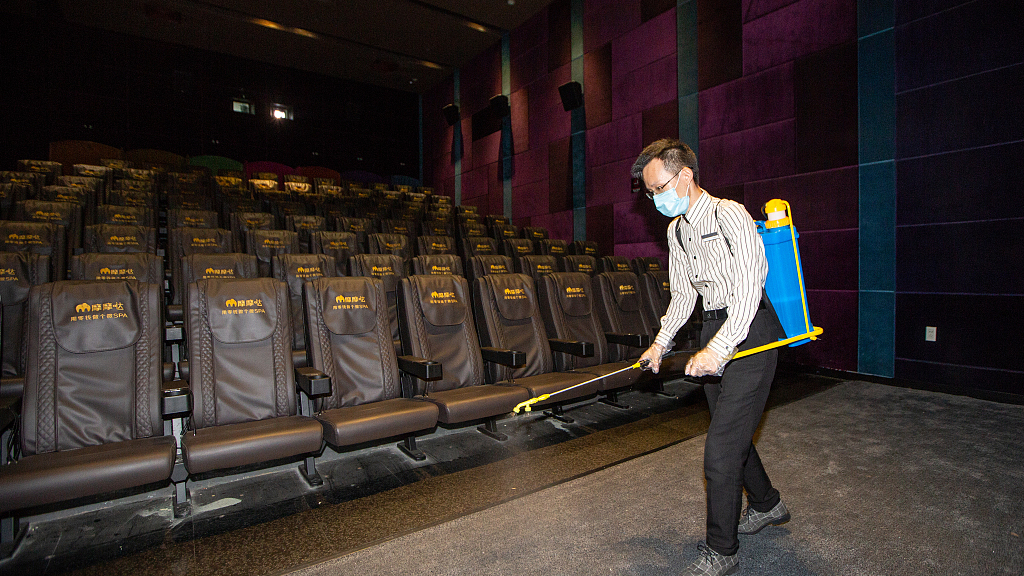Editor's note: On March 12, 2020, the World Health Organization (WHO) declared COVID-19 a pandemic, and as of July 22, about 200 countries and regions confirmed over 14,756,000 cases, according to the WHO. On CGTN's livestream program "COVID-19 Frontline," we've invited workers and experts from China and other parts of the world to share their working experiences and take questions from social media, in the hope of providing more information for those who are fighting against the pandemic.
In the latest episode of CGTN's livestream program "COVID-19 Frontline" held on July 22, CGTN invited three prominent health experts from Peking University First Hospital, one of the top hospitals under China's National Health Commission to exchange experience treating COVID-19 patients with peers from Mexico's National Institute of Medical Sciences and Nutrition Salvador Zubiran.
As of July 22, there were over 356,000 confirmed COVID-19 cases in Mexico with over 40,000 deaths, according to Johns Hopkins University.

"COVID-19 Frontline", July 22, 2020. / CGTN
"COVID-19 Frontline", July 22, 2020. / CGTN
The use of anticoagulant therapy
Carlos Torruco, critical care medicine specialist and attending physician from Mexico, asked about the use of anticoagulant therapy, or treatment plans for patients with blood clots, and which type of prophylactic and therapeutic anticoagulation drug should be used.
Weng Haoyu, attending physician at the Department of Cardiology, Peking University First Hospital, answered that studies have found that many critically ill COVID-19 patients develop tiny venous thrombosis in the lungs and heart, as well as elevated D-Dimer levels, which are the causes of death. He suggests focusing on the patient's conditions such as the timing of bleeding, noting that low-molecule-weight heparin is most commonly used by Chinese doctors, and the dosage should be adjusted according to the patient's condition.

Doctor Weng Haoyu in Wuhan. / CGTN
Doctor Weng Haoyu in Wuhan. / CGTN
The shortage of drugs
Juan Gutierrez Mejia from the Disaster Reaction Planning Department at the National Institute of Medical Sciences and Nutrition Salvador Zubirán mentioned the shortage of drugs in many Mexican hospitals, some of which were even difficult to obtain in the market. He asked Chinese doctors whether they experienced similar situations and what their solutions were.
Chinese attending physician Hu Zhanwei said there was also a shortage of drugs in the early stages of the outbreak in Wuhan. Some basic medication including cardiovascular and cerebrovascular drugs and diabetes drugs were low in stock. However, this situation was soon alleviated with the arrival of medical teams and equipment from all over the country.
Dr. Hu said that although there are no specific drugs for COVID-19, drugs such as antibiotics and glucocorticoids are very important for the treatment of patients and should be timely supplemented.
The effect of noninvasive positive-pressure ventilation (NPPV)
Li Haichao, vice president of Peking University First Hospital, director of internal medicine, mentioned the advantages of using noninvasive positive-pressure ventilation compared with invasive mechanical ventilation. For instance, during the NPPV treatment, the patient can stay awake and have direct communication with the doctor, who can observe the patient's basic condition and reaction. In addition, Li said some patients have severe hypoxemia, and intubation at this time is likely to cause sudden death, which can also be avoided by using NPPV.
01:59

About prone positioning ventilation
The Mexican doctors mentioned that 60 to 70 percent of the patients in the ICU of local hospitals use prone position combined with oxygen therapy. Dr. Hu said in Chinese hospitals, the prone position is usually used in patients with acute respiratory distress syndrome (ARDS) and some patients with lesions in the rear of the lungs. Not all patients are able to adapt to the treatment. At least four staff members are needed to safely position the patient and the duration for proning is no longer than 12 hours. The patient's breathing rate should also be closely monitored.
Advice for Mexican medics
Doctors from Mexico's National Institute of Medical Sciences and Nutrition Salvador Zubiran also asked about the advice on fighting COVID-19.
Dr. Hu said Mexican doctors to do their best to protect themselves, saying only by doing so could more patients be saved. In terms of treatment, he suggested to provide patients with respiratory support, not to give up on them, as long as the treatment lasts long enough, most patients will get better.
Li Haichao mentioned the importance of wearing masks, saying it can significantly reduce the proportion of critically ill patients.
00:55

In later episodes of "COVID-19 Frontline," more frontline doctors and experts from China will join in to share their experience with their colleagues from other parts of the world. If you have any questions regarding COVID-19, you can share with us using #MyOpinionOnCOVID19 on Facebook.
(Videos by Zeng Hongen, cover image by Du Chenxin)